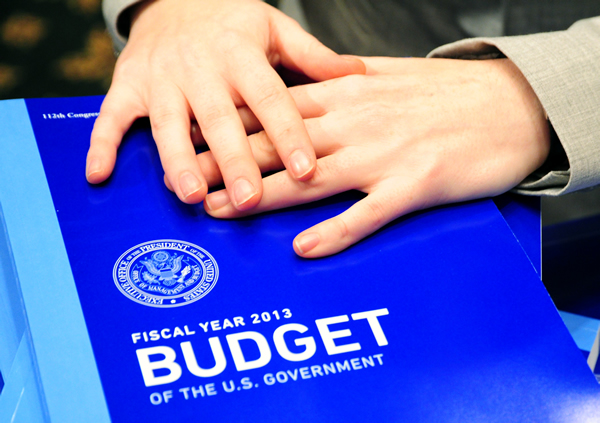Reaction Roundup: Heritage Responds to Obama’s 2013 Budget Proposal
Today, President Barack Obama released his budget for Fiscal Year 2013. Experts from The Heritage Foundation are analyzing the President’s proposal and offer their reactions, below:
President Obama’s Budget Proposal: Running on Empty
- Patrick Louis Knudsen
Coming from a President whose economic philosophy is a borrowed car company slogan, the Obama budget submitted Monday all too predictably repeats the stale and unsuccessful policies of the past three years.
The Administration has tapped all its resources and can only recycle the President’s shopworn “vision”: bigger government, more spending, higher taxes, and deeper deficits. At a time when runaway spending and swelling deficits must be reversed, he worsens both immediately but, as usual, promises to fix them later. In his first post-debt-ceiling fiscal plan—delayed a week, with no explanation—the President appears to have offered an election-year campaign document, not a credible blueprint for addressing the nation’s fiscal and economic problems.
Spending in the President’s budget rises inexorably from today’s $3.8 trillion to $5.8 trillion in 2022. Throughout the decade, outlays hold stubbornly above 22 percent of gross domestic product (GDP), more than twice the New Deal’s share of the economy in its peak years. In constant dollars, outlays are more than three times the peak of World War II.
In 2012, his budget results deliver a fourth consecutive annual deficit exceeding $1 trillion and then make it worse with another round of not-so-shovel-ready construction projects and government “investments” totaling $178 billion. Among these are the typical road, bridge, and school construction, but then they go alarmingly beyond the usual “infrastructure” arguments to fund teachers’ pay.
Obama’s future deficit reduction comes mainly from Budget Control Act cuts already in place, $848 billion in discredited phantom “savings” from the wind-down of operations in Iraq and Afghanistan, taking credit for reductions in 2011 appropriations, and roughly $1.8 trillion in unnecessary tax increases on those earning above $250,000 and the oil and gas industry.
Yet even with the hefty tax increases and illusory savings, the President’s deficits over the next decade never fall below $575 billion (in 2018) and climb back to $704 billion (in 2022)—but again only assuming the tax increases and mystical savings cited above.
Debt held by the public in the President’s budget rises from 74.2 percent of GDP today to an economically hazardous 76.5 percent of GDP in 2022. These are historically high debt levels: the post–World War II average is just 43 percent. Moreover, the President’s debt estimates are low because of the unreal nature of much of his proposed deficit reduction.
Regarding the most critical fiscal challenge of the day—the need to restructure Medicare, Medicaid, and Social Security—the President has once again taken a pass. By the middle of this century, these three programs and Obamacare will consume about 18 percent of GDP, soaking up all the historical average of federal tax revenue. The notion of “protecting” them through benign neglect only ensures their collapse, and the longer Congress and the President wait to address the problem, the more wrenching will be the consequences. But the President merely reruns previous ideas, such as more cuts to medical providers, ignoring the need for fundamental reform.
For other entitlements, the President repeats a range of mere chipping-around-the-edges proposals from last year’s budget, many of which are really tax or fee increases, not spending reductions.
In short, the President’s budget is the same worn-out collection of higher spending and higher taxes he has offered three times before—with the same inevitable result of more spending, higher taxes, and still more government debt.


No comments:
Post a Comment